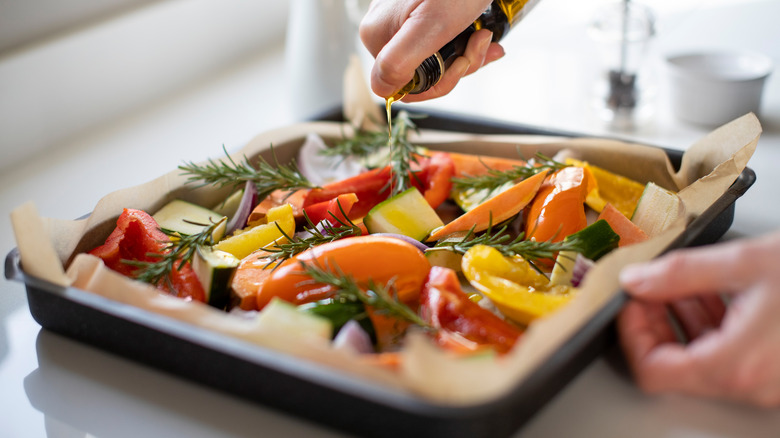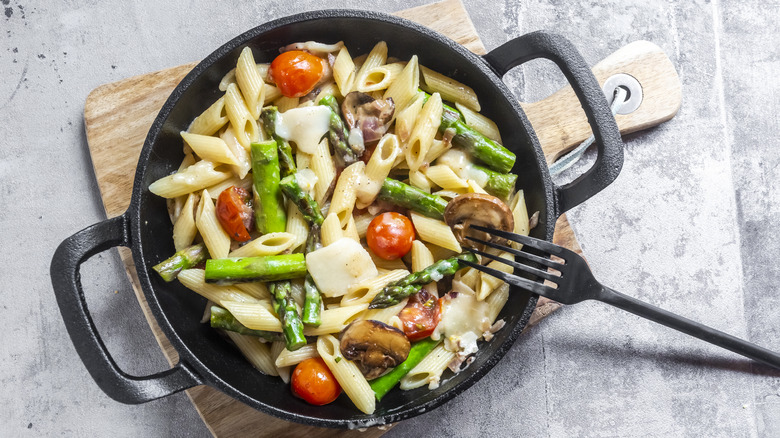Ina Garten's Genius Tip For Delicious Roast Veggie Pasta
Ina Garten is well-known to fans of her hit Food Network show, "Barefoot Contessa." Since its premiere in 2002, Ina has shared recipes and advice on cooking and entertaining on her series and in her vast array of cookbooks. She is considered an expert on everything from appetizers to desserts.
When Garten has a tip for making roast veggie pasta, it makes sense to pay attention. Her genius advice will add flavor and color to the dish. This tip isn't just brilliant; it's also very easy to do: Don't discard the juices and bits left over in the pan when you take the vegetables out of the oven after roasting. Those flavor bombs can be mixed right into the pasta dish. The caramelization from roasting adds a concentrated richness that will naturally complement the meal. Like how deglazing a pan adds flavor to gravy, the vegetable drippings infuse the meal with savory goodness.
A single layer of vegetables in the pan does the trick
Ina warns about making a common mistake while roasting vegetables. Putting too many vegetables on the baking pan and allowing them to overlap or touch can affect the final dish. Overloading the pan prevents what is known as the Maillard reaction from occurring. The Maillard Reaction creates the beautiful brown color and deep flavors of caramelization as the proteins and sugars are broken down.
If the vegetables touch each other during roasting, steam will form, affecting their texture and preventing caramelization. This is especially true for vegetables with a high water content, such as zucchini, eggplant, or summer squash. Cutting the vegetables into uniform pieces will ensure they all cook at the same rate.
Ina Garten shared her advice for roasting vegetables in the "In A Minute" segment of Drew Barrymore's show. In the short video, she also recommended cooking the vegetables at a high temperature to encourage caramelization. The oven should be set to 425 degrees Fahrenheit, and the vegetables turned at least once during roasting to get the golden color you're looking for.
Using fond for extra flavor
There's a name for the bits of food left behind after roasting. In French, it's called "fond," and literally translated means "bottom" or "base." Most often known as the result of roasting meat, fond is also a product of roasting vegetables. It's important to note that it doesn't take long for fond to go from brown and tasty to black and bitter, so keep an eye on your vegetables as they're roasting.
Other things are important to know if you want to up your roasted vegetables game. Fond will not build up on a non-stick pan, and roasting vegetables on parchment paper will not yield the same results. To help with the browning process, it's recommended that you use a metal baking sheet with a drizzle of oil. If you're using two baking pans at once, keep them as far apart as possible in the oven to prevent any steam from the bottom pan from affecting the contents of the top pan.
Ina Garten's tip isn't just for pasta dishes. Sauces can also benefit from the addition of the flavorful pan drippings. Try roasting bell peppers and tomatoes for chili or ratatouille and adding the fond to the pot. Those tiny bits of pan scraps will elevate the flavor of any recipe.


